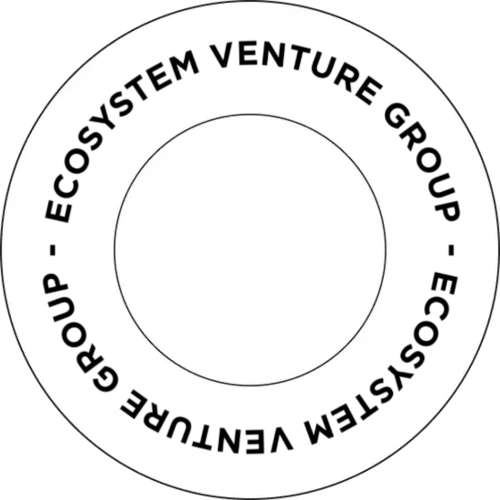Imagine sitting down at a dinner table with friends. Everyone’s hungry, the food looks incredible, and now it’s time to divide the portions. Who gets what? Does the person who cooked get the biggest share? Do the early arrivals take a larger helping, or should we save enough for the friends who are still on their way?
That’s essentially what a cap table is: the “dinner table” of ownership. Instead of plates of food, it’s slices of equity. Founders, investors, employees, and advisors all sit around it, and how the equity is portioned determines not only who eats today, but whether there’s enough left to keep everyone coming back tomorrow.
At Ecosystem Venture Group, we spend a lot of time talking about “cap table confidence.” For us, that means structuring equity in a way that keeps both founders and investors aligned for the long run. This blog is about why caps tables matter so much, common pitfalls we see, and how we approach helping founders retain meaningful control of the companies they build.
Why Cap Tables Matter More in the Early Stages
In the early days, it’s easy to shrug off the cap table as just a legal document for lawyers and accountants to sort out. But the truth is, a poorly managed cap table has consequences that ripple out for years.
For example, take a founder who gives away too much equity to early angel investors. By the time institutional capital arrives, that founder may only hold a small stake, sometimes less than 20% by Series B. This not only reduces motivation but can also send the wrong message to later investors, who want to see founders with enough skin in the game to keep pushing.
On the flip side, if founders try to hold on to too much and avoid dilution entirely, they may struggle to bring in top-tier investors or talent. Striking the right balance is where the real art lies.
Healthy Equity Dynamics: What Do They Look Like?
Healthy cap tables are built on three principles:
- Fairness – Founders, employees, and investors should all feel that their contributions are reflected in their stake.
- Flexibility – The structure should leave room for future funding rounds without crippling the founders.
- Transparency – Everyone around the table should know where they stand and what the trade-offs mean.
Consider this: data from Carta shows that at the seed stage, founders on average retain about 60–70% ownership. By Series A, this drops to around 45–55%, and by Series B, founders typically hold between 30–40%. These benchmarks can help set expectations, but every startup’s journey is unique.
We encourage founders to think not just about the percentage today but about where their ownership will land after three or four rounds. A founder who starts at 70% but ends at 10% has lost equity, influence, and often, their original vision.
Common Cap Table Pitfalls
We’ve seen recurring mistakes that put founders and investors in difficult positions later:
- Over-promising equity to advisors or early employees without vesting schedules. This leads to “dead equity” in the hands of people no longer contributing.
- Complicated SAFE/convertible note structures that stack up and cause surprises at conversion.
- Ignoring employee option pools until later rounds, forcing sudden and painful founder dilution.
These pitfalls are avoidable, but only with early discipline and foresight.
The Investor’s Role in Healthy Cap Tables
It’s not just the founders ‘ responsibility to get this right. Investors have a responsibility, too. Smart investors help founders navigate these trade-offs so that control and motivation remain intact.
At Ecosystem Venture Group, we approach investments with the mindset of alignment. We want our founders to stay engaged, empowered, and in control, because that’s when companies perform best. A founder who feels forced out or sidelined by their own cap table is rarely a recipe for success.
That means being thoughtful about how much equity we ask for, making sure option pools are right-sized for growth, and supporting transparent discussions around dilution.
Building Confidence Through Structure
So how do founders and investors actually build cap table confidence?
- Plan ahead. Model multiple future rounds before finalizing today’s structure. Ask: “If we raise $X at Series A and Series B, where will my ownership end up?”
- Set up vesting properly. Four years with a one-year cliff is standard for employees and should also apply to founders in many cases.
- Communicate openly. Regularly update the cap table and share it with key stakeholders. Surprises are the enemy of trust.
A well-structured cap table prevents problems and accelerates growth. It reassures new investors that there’s discipline in place, and it reassures founders that their leadership remains central to the journey.
How Ecosystem Venture Group Supports Founders
At Ecosystem Venture Group, our goal is to help founders retain control while ensuring that investors see healthy returns. When we invest, we look at the cap table not just as it exists today but as a roadmap for the next several stages of growth.
We work alongside founders to model different funding scenarios, right-size equity pools, and ensure that ownership incentives are preserved across seed, Series A, and beyond. Our philosophy is simple: founders should remain the driving force of their companies, and investors should feel confident that their capital is supporting, not replacing, that vision.
That’s why we call it “cap table confidence.” Because when everyone around the table knows their role, feels their stake is fair, and trusts the structure, that’s when startups have the freedom to focus on what really matters: building transformative companies.




